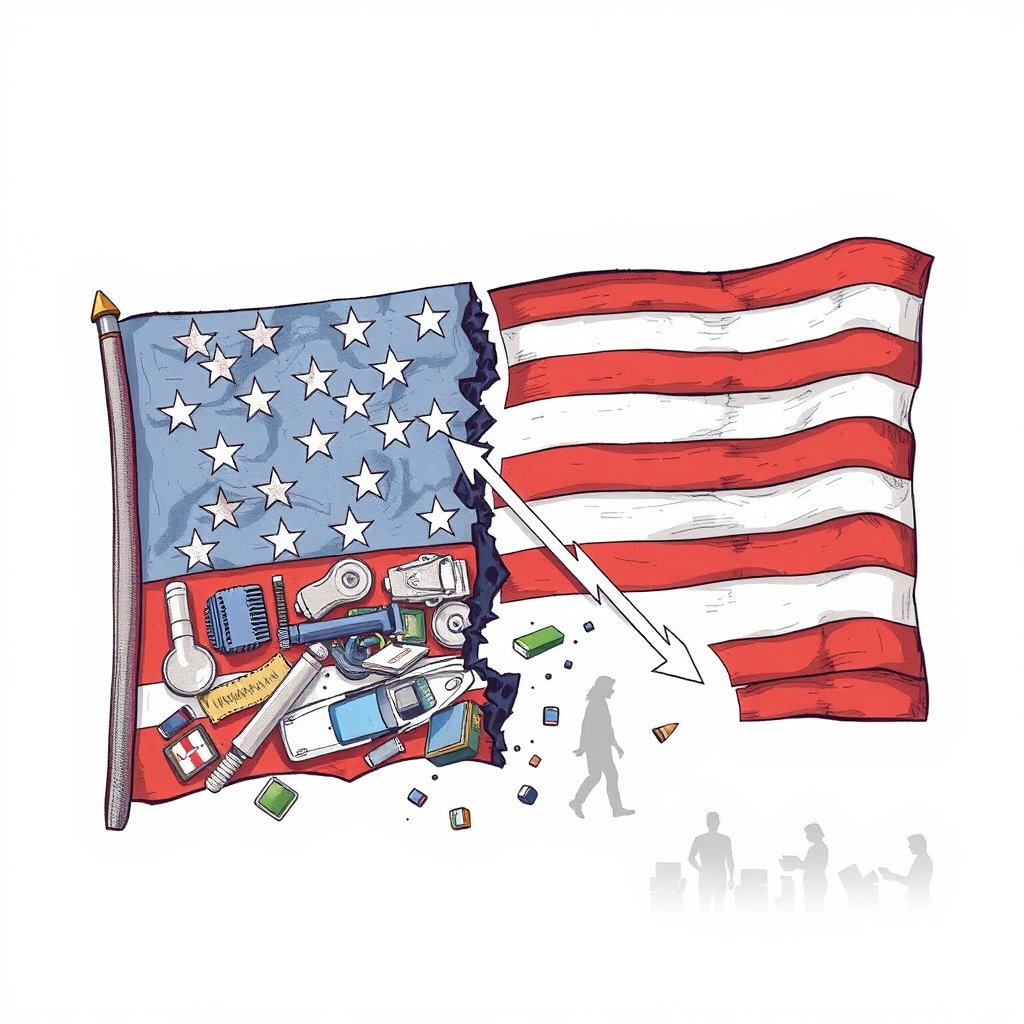Trump's Tariffs: Economic Panic and Manufacturing Slowdown

Recent economic indicators suggest President Trump’s tariffs are creating significant disruption, casting doubt on his stated goals of revitalizing American manufacturing and boosting the economy. While the administration hopes tariffs will incentivize companies to onshore production and address trade imbalances, data reveals a more complex and concerning picture.
Consumer confidence has plummeted to near-record lows, with the University of Michigan’s consumer confidence index falling to 50.9 immediately following the tariff announcements – a level lower than during the Great Recession and comparable to the depths of the Covid-19 pandemic. This isn’t simply market jitters; it’s translating into tangible consumer behavior. There’s been a surge in “panic buying” of goods likely to be affected by price increases, such as cars and electronics. While this initially boosted sales in some sectors – motor vehicle and parts sales increased 5.3 percent in March, and electronics and appliance stores saw a 0.8 percent rise – economists caution this is unsustainable and doesn’t signal a healthy economy. The temporary boost is likely to be followed by a pullback in spending as consumers adjust to higher prices.
The impact on American manufacturing is particularly troubling. Contrary to the administration’s promises, manufacturing activity has slowed since the tariffs were announced. Surveys from the Federal Reserve Banks of New York and Philadelphia paint a pessimistic outlook. The New York Fed’s future general business conditions index dropped to 7.4 in April, its second-lowest reading in over two decades. The Philadelphia Fed’s new order index experienced an even sharper decline, plummeting to -34.2 – its lowest point since the early days of the pandemic.
This data directly contradicts the administration’s narrative. Instead of incentivizing domestic production, the tariffs are creating uncertainty and hindering investment. Manufacturers, rather than expanding, are bracing for a slowdown. Some are attempting to subtly appeal to the administration, highlighting existing US investments, but it remains unclear whether these efforts will sway President Trump.
The situation is deeply concerning. While tariffs can be a tool for addressing unfair trade practices, their blunt implementation, without a clear strategy or consideration for unintended consequences, appears to be backfiring. The current trajectory suggests the tariffs are more likely to harm the US economy than to deliver the promised benefits. The administration’s continued reliance on this policy, despite mounting evidence of its negative impact, is a risky gamble with potentially significant consequences for American consumers and businesses. It’s a clear example of how economic policy divorced from reality can create more problems than it solves.